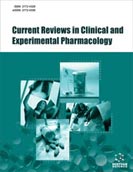Abstract
Background: Rocuronium is a muscle relaxant with increased use due to its binding relation with the reversal agent sugammadex. The purpose of this review entails the investigation of its use for the maintenance of Deep Neuromuscular Block (NMB) via continuous infusion.
Methods: Based on PRISMA systematic search guidelines, databases included PubMed, ISI Web of Science, Cochrane Library and Google Scholar. This comprehensive search addresses surgical patients under deep muscle relaxation via continuous rocuronium infusion. The main indicators were the rocuronium administration, NMB monitoring approaches and effects in order to maintain the deep level of relaxation, as well as reversal time after a standard dose of sugammadex.
Results: Despite the variance in approaches found in the literature, findings show the overall maintenance of deep NMB requires approximately 0.758 mg.kg-1h-1 of rocuronium (according to the PTC target of 0-10, 0-5 and 1-2, mean estimates are 0.445, 0.65 and 0.833 mg.kg-1h-1 respectively), suggesting that a lower range and a smaller maximum of PTC response require higher amount of rocuronium for its maintenance. The standard dose of sugammadex (4 mg/kg), administered at the end of the surgery takes longer [2.85 (1.17) min] than when they are administered after moderate NMB recovery [1.68 (0.47) min].
Conclusion: Continuous infusion for deep NMB presents inherent advantages in terms of maintenance and stability of muscle relaxation. Monitoring and rocuronium administration approaches are fundamental and intrinsically connected to provide a stable and improved maintenance of deep NMB.
Keywords: Anesthesia, neuromuscular blockade, Post-tetanic count, continuous infusion, deep NMB, rocuronium.
[http://dx.doi.org/10.1345/aph.1P547] [PMID: 21386017]
[http://dx.doi.org/10.1345/aph.1Q004] [PMID: 21828347]
[http://dx.doi.org/10.1097/CCM.0000000000002027] [PMID: 27755068]
[http://dx.doi.org/10.1093/bja/aep150] [PMID: 19546202]
[http://dx.doi.org/10.1093/bja/69.3.269] [PMID: 1389845]
[http://dx.doi.org/10.1034/j.1399-6576.2001.045005612.x] [PMID: 11309014]
[http://dx.doi.org/10.2165/00003088-199631030-00002] [PMID: 8877248]
[http://dx.doi.org/10.1007/BF03007578] [PMID: 1829656]
[http://dx.doi.org/10.1111/j.1365-2044.1993.tb06844.x] [PMID: 8460753]
[http://dx.doi.org/10.1097/00003643-200501000-00006] [PMID: 15816569]
[http://dx.doi.org/10.1097/00003643-201106001-00427]
[http://dx.doi.org/10.4103/0971-9784.41575]
[http://dx.doi.org/10.1097/00003246-200201000-00021] [PMID: 11902255]
[http://dx.doi.org/10.1097/CNQ.0000000000000171] [PMID: 28834856]
[http://dx.doi.org/10.1213/00000539-199404000-00013] [PMID: 8135387]
[http://dx.doi.org/10.1023/A:1008645511543] [PMID: 9089751]
[http://dx.doi.org/10.1093/bja/aet001] [PMID: 23427212]
[http://dx.doi.org/10.1111/j.1399-6576.2007.01352.x] [PMID: 17635389]
[http://dx.doi.org/10.1007/s12630-016-0619-9] [PMID: 26920705]
[http://dx.doi.org/10.1213/ANE.0000000000004065] [PMID: 31094813]
[http://dx.doi.org/10.1097/SLE.0000000000000164] [PMID: 26121545]
[http://dx.doi.org/10.1093/bja/aet377] [PMID: 24240315]
[http://dx.doi.org/10.1007/s00464-014-3711-7] [PMID: 25125097]
[http://dx.doi.org/10.1097/EJA.0000000000000884] [PMID: 30188357]
[http://dx.doi.org/10.1186/1745-6215-14-63] [PMID: 23452344]
[http://dx.doi.org/10.1097/EJA.0b013e32835dccd7] [PMID: 23344123]
[http://dx.doi.org/10.1046/j.1365-2044.2001.01921.x] [PMID: 11284816]
[http://dx.doi.org/10.1002/1521-3757(20020118)114:2<275:AID-ANGE275>3.0.CO;2-A] [PMID: 12491405]
[http://dx.doi.org/10.2165/00003495-200969070-00008] [PMID: 19441874]
[http://dx.doi.org/10.2174/157488711796575559] [PMID: 21682689]
[http://dx.doi.org/10.1093/bja/85.5.717] [PMID: 11094587]
[http://dx.doi.org/10.1093/bja/aet586] [PMID: 25829395]
[http://dx.doi.org/10.1186/1471-2288-5-13] [PMID: 15840177]
[http://dx.doi.org/10.1213/ANE.0000000000000316] [PMID: 24977638]
[http://dx.doi.org/10.1371/journal.pone.0135412] [PMID: 26317357]
[http://dx.doi.org/10.1093/bja/aex241] [PMID: 28969327]
[http://dx.doi.org/10.1213/ANE.0000000000001801] [PMID: 28107276]
[http://dx.doi.org/10.1093/bja/aex116] [PMID: 28575335]
[http://dx.doi.org/10.1111/aas.13271]
[http://dx.doi.org/10.12998/wjcc.v3.i4.360] [PMID: 25879008]
[http://dx.doi.org/10.1016/j.egja.2011.12.007]
[http://dx.doi.org/10.1111/aas.12549] [PMID: 25962400]
[http://dx.doi.org/10.1097/00003643-201406001-00429]
[http://dx.doi.org/10.1186/1471-2253-15-7] [PMID: 25971394]
[http://dx.doi.org/10.1097/ALN.0b013e3181a51cb0] [PMID: 19512873]
[PMID: 23544332]
[http://dx.doi.org/10.1213/01.ANE.0000066262.32103.60] [PMID: 12818941]
[PMID: 23461992]
[http://dx.doi.org/10.1016/j.rcae.2012.05.001]































